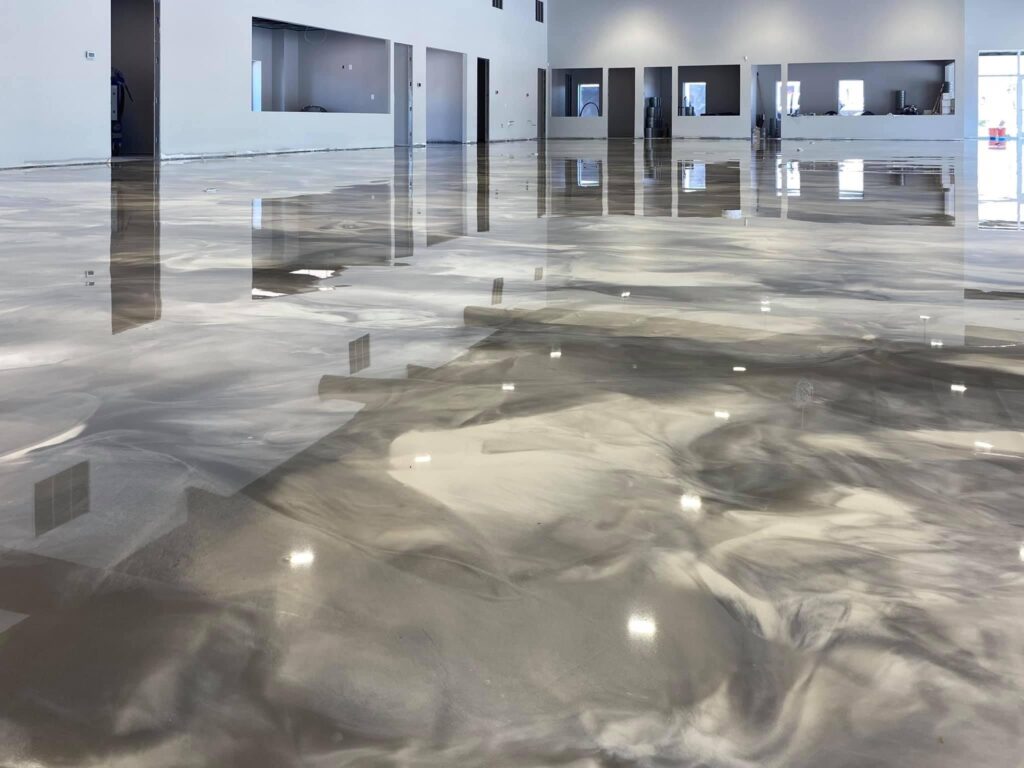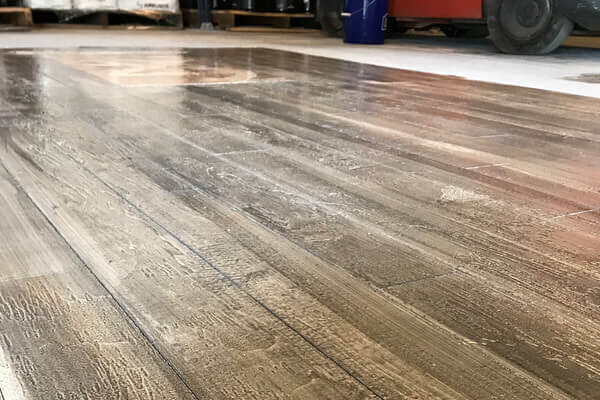Fire station flooring is becoming a hot topic among firefighter communities lately.
Why?
With many local fire stations aging, infrastructure and safety are becoming increasingly important aspects.
Most modern fire stations were built with inexpensive and efficient materials.
However, tile and linoleum floors in fire stations are simply not up to the task. For fire stations looking to improve their flooring options, epoxy floors are one option.
Epoxy flooring for fire stations has several benefits, making it a superior choice over tile and linoleum.
This article will highlight the pros of epoxy vs. tile and linoleum and provide information on how you can work with a professional team to install epoxy flooring in a fire station.
The Issue with Taking the Cheaper Route
With the budget crunch that nearly all emergency services are currently experiencing, obtaining and installing tile or linoleum flooring is not a bad option.
However, problems with tile and linoleum flooring in fire stations can arise quickly:
The linoleum tiles are very slippery when mopped with water during training, and they cannot tolerate extreme temperatures, which cause buckling and peeling of the surface.
On the other hand, tile grout floors absorb moisture from fire hoses, which cause mold or mildew to grow underneath these floors.
The tile grout also expands and contracts when it gets wet and dry, respectively. This causes the covering to loosen, buckle and break off.
The Advantages of Epoxy Flooring
What is the solution? Switch to epoxy floors!
Epoxy flooring in fire stations is becoming more popular these days because of its many benefits.
Installing epoxy floors in your local fire station has been proven to increase safety and efficiency during operations:
- Can withstand greater changes in temperature
- Resistant to mold and mildew because of its waterproof properties
- Slippery surface when wet, but not slick or sticky when dry, unlike tiles and linoleum (which are very prone to slips)
- Easy maintenance – just mop with water! No scrubbing or steam cleaning is needed.
- Cheaper than tile grout and linoleum
- Most epoxy flooring options come in standard universal interlocking tiles, which are easily replaceable. These flooring options have been proven to last for many years, even in the harshest environments.
Epoxy Floors In Fire Stations: It's a Win-Win
With so many benefits available, is there really a reason for not switching to epoxy flooring?
For fire stations, safety and efficiency are top priorities. With epoxy floors at your local fire station, firefighters will be able to focus more on their training.
Fewer slips could mean fewer medical cases or worse accidents.
Training room floors could be slippery when wet, but with epoxy flooring, firefighters can be assured that there is no need to worry about slipping.
Epoxy floors are also easy to maintain and clean, which means less time spent doing these tasks.
With so many advantages of epoxy flooring over tile grout or linoleum, it’s no surprise why more fire stations are switching to it now.
Epoxy is weatherproof, so fire station floors are less likely to crack or chip when compared with tile grout and linoleum.
The epoxy flooring also protects the subfloor from water damage allowing you to use them for many years without having to redo your flooring in the future.
Making The Switch to Epoxy
Do you have a new fire station, or are you planning to build one soon?
Consider installing epoxy floors to help protect property and equipment for longer.
If you want to learn more about the advantages of epoxy or how you can make the switch to this material, contact your local epoxy company today.
An expert epoxy flooring contractor can provide you with more information and give you advice about the best flooring options for your specific station’s flooring and design.



